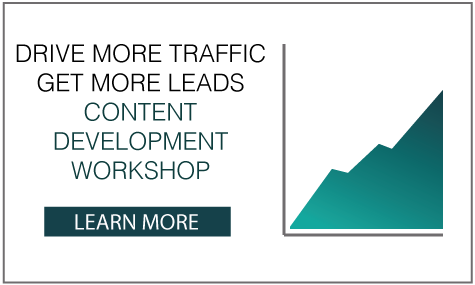Old > New
In this four-part series Web Site Development Strategy, we are going to focus on four key areas: web site redesign planning, content planning and mapping (including a handy content development checklist), SEO and inbound marketing planning worksheets, web site field trips (what they are, and the importance of conducting one) and rolling it all up into a lead generating web site that brings in business 24/7.
Web Site Redesign Planning:
The web site planning process is the most crucial. Ask yourself the following questions:
What is the overall goal for the company, and how can the web site help achieve that goal?
Who is the audience that we are marketing to?
What do they need?
What do we want them to understand?
What do we want them to do?
Websites built on a hub-and-spoke model of marketing are the central core of marketing. This means that every marketing activity drives customers TO the web site, from many different points, it disseminates information out to prospects and customers FROM the web site and it serves as the base of all marketing operations, including internal ones. A lot of roads in and out of your web site, built around keywords that people are searching for (internet marketing strategies) versus your brand (Spoke8 Marketing) are critical for this model to work.
What is the overall goal for the company? If you answered “grow sales 20% this year” then your web site must serve as the platform for generating and nurturing leads.
Who is the audience we are marketing to? Break your audience down into no more than three categories to begin with. Each of these markets should be distinct ones. Specialize by focusing in on your top industries – ones where you have both expertise/strength and you have the right product or service match.
Market segmentation is really too large of a topic to stick in as a single bullet point in a blog post. Practicing the marketing science of segmentation, finding your niche and developing content, products and services for it; that is how companies grow and succeed.
What does that audience need? If you align your web site process with a flow that matches what the user needs, at the stage they need it, you will be able to nurture and collect leads and offer followups that perfectly tailor themselves to your prospects’ sales-funnel stage.
If they are an early-stage researcher, offering broad guides, how-tos, and e-books, then narrowing down to checklists, case studies and whitepapers, and then moving into buying decision-making guides, your prospect will feel that they have just the right information at the perfect time.
An example of this is having product and service information, but tailoring that page toward a top-of-the funnel buyer with an informative guide on how to evaluate that product or service.
What do we want them to do? Understand what the next stage buyer needs to make a vendor- or product-selection decision and matching that with the content you’re offering – guides, blog posts, downloadable checklists all offer the user a chance to learn more in the early stages, drill down through options in the middle that help them narrow the field to just your company.
The last stage is the buying stage. Offering a call to action to a demo, in person review, test drive, sample: whatever it takes for your buyer to experience your product or service is the very last thing they need to do prior to signing.
Knowing what we want them to do at each stage and offering that via a call to action is key. it might be a low-level offer to follow or subscribe to a company blog. It might be a mid-level offer to answer a few short questions to get an e-book, or a more detailed indepth questionnaire that asks company size, demographics and intended buying timeline to receive a more detailed checklist. Each of these stage-modeled or sales-funnel matched offers has a different form attached to it, and a different call to action.
Wrapping it all up, do all of these elements influence the buying behavior that is intended to meet up with the company goals? The process of web site planning is to align the company goals with the functions of the web site.






